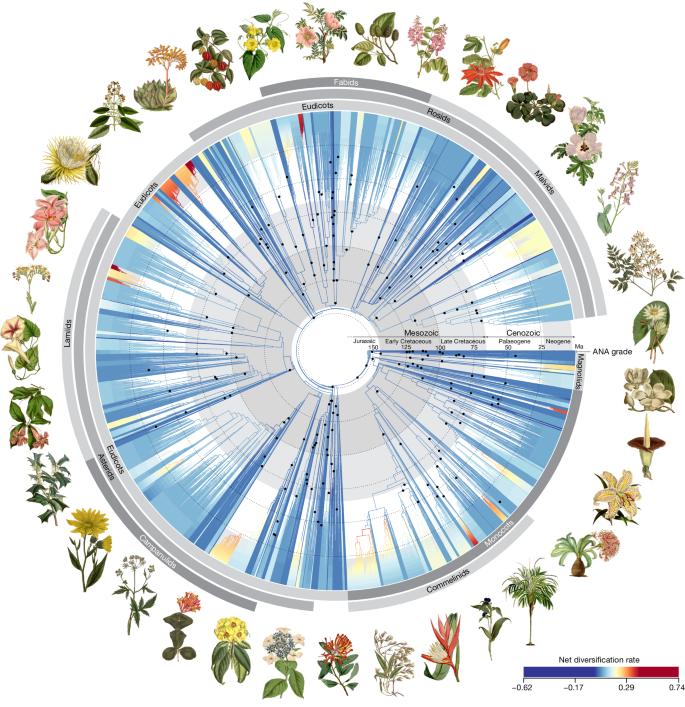2024-04-24 ミシガン大学
<関連情報>
- https://news.umich.edu/vast-dna-tree-of-life-for-flowering-plants-revealed-by-global-science-team/
- https://www.nature.com/articles/s41586-024-07324-0
系統発生学と被子植物の台頭 Phylogenomics and the rise of the angiosperms
Alexandre R. Zuntini,Tom Carruthers,Olivier Maurin,Paul C. Bailey,Kevin Leempoel,Grace E. Brewer,Niroshini Epitawalage,Elaine Françoso,Berta Gallego-Paramo,Catherine McGinnie,Raquel Negrão,Shyamali R. Roy,Lalita Simpson,Eduardo Toledo Romero,Vanessa M. A. Barber,Laura Botigué,James J. Clarkson,Robyn S. Cowan,Steven Dodsworth,Matthew G. Johnson,Jan T. Kim,Lisa Pokorny,Norman J. Wickett,Guilherme M. Antar,… William J. Baker
Nature Published:24 April 2024
DOI:https://doi.org/10.1038/s41586-024-07324-0

Abstract
Angiosperms are the cornerstone of most terrestrial ecosystems and human livelihoods1,2. A robust understanding of angiosperm evolution is required to explain their rise to ecological dominance. So far, the angiosperm tree of life has been determined primarily by means of analyses of the plastid genome3,4. Many studies have drawn on this foundational work, such as classification and first insights into angiosperm diversification since their Mesozoic origins5,6,7. However, the limited and biased sampling of both taxa and genomes undermines confidence in the tree and its implications. Here, we build the tree of life for almost 8,000 (about 60%) angiosperm genera using a standardized set of 353 nuclear genes8. This 15-fold increase in genus-level sampling relative to comparable nuclear studies9 provides a critical test of earlier results and brings notable change to key groups, especially in rosids, while substantiating many previously predicted relationships. Scaling this tree to time using 200 fossils, we discovered that early angiosperm evolution was characterized by high gene tree conflict and explosive diversification, giving rise to more than 80% of extant angiosperm orders. Steady diversification ensued through the remaining Mesozoic Era until rates resurged in the Cenozoic Era, concurrent with decreasing global temperatures and tightly linked with gene tree conflict. Taken together, our extensive sampling combined with advanced phylogenomic methods shows the deep history and full complexity in the evolution of a megadiverse clade.


